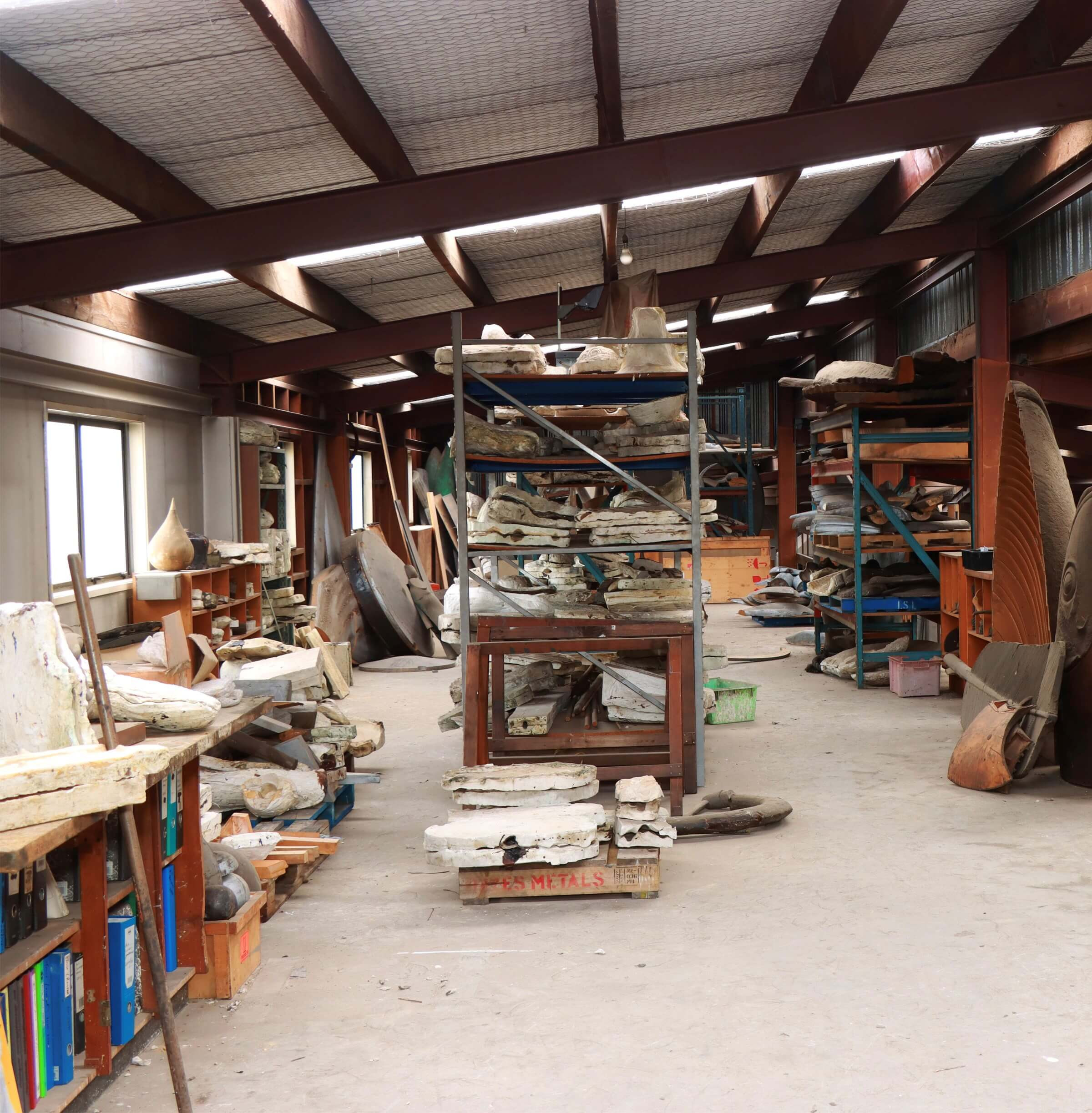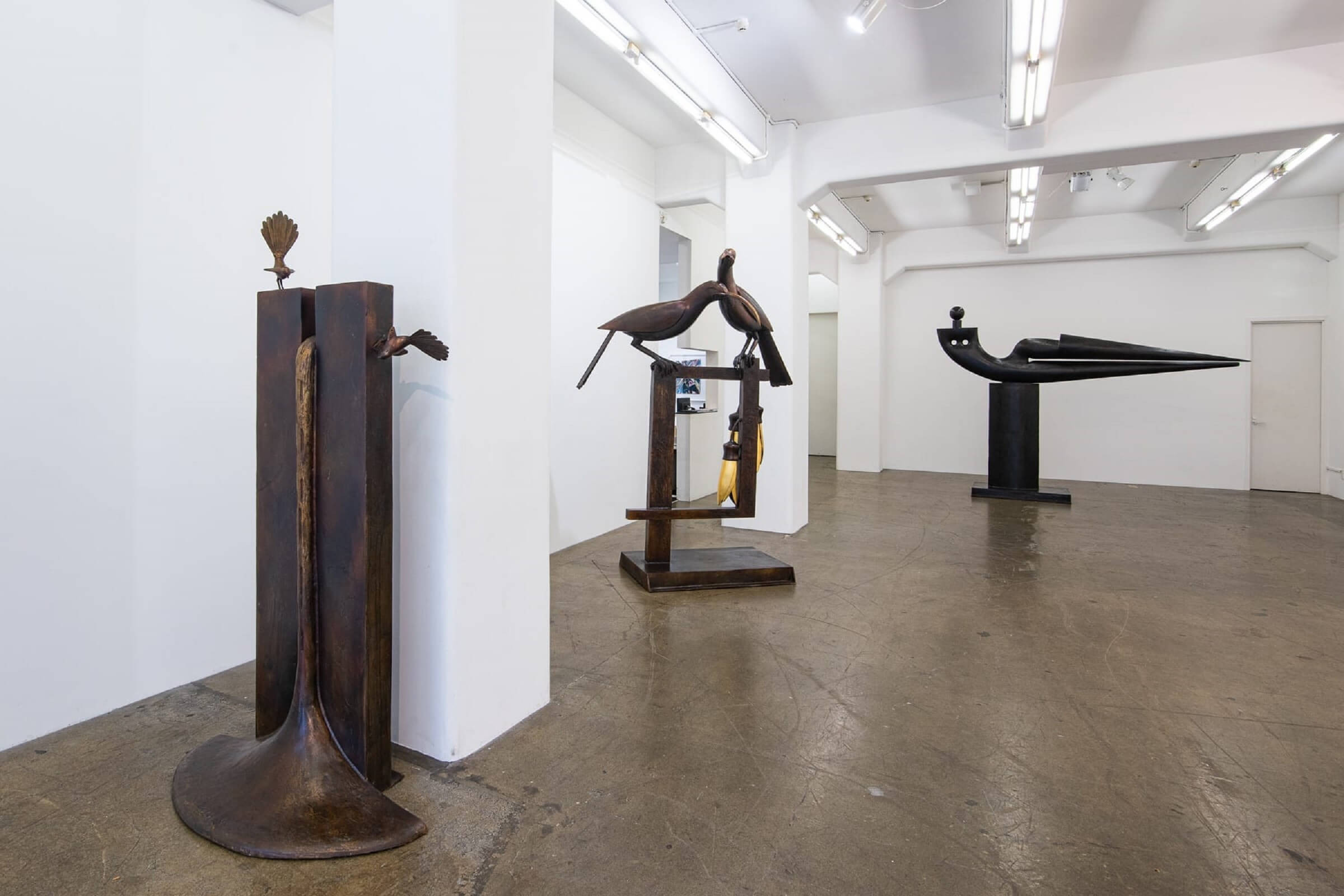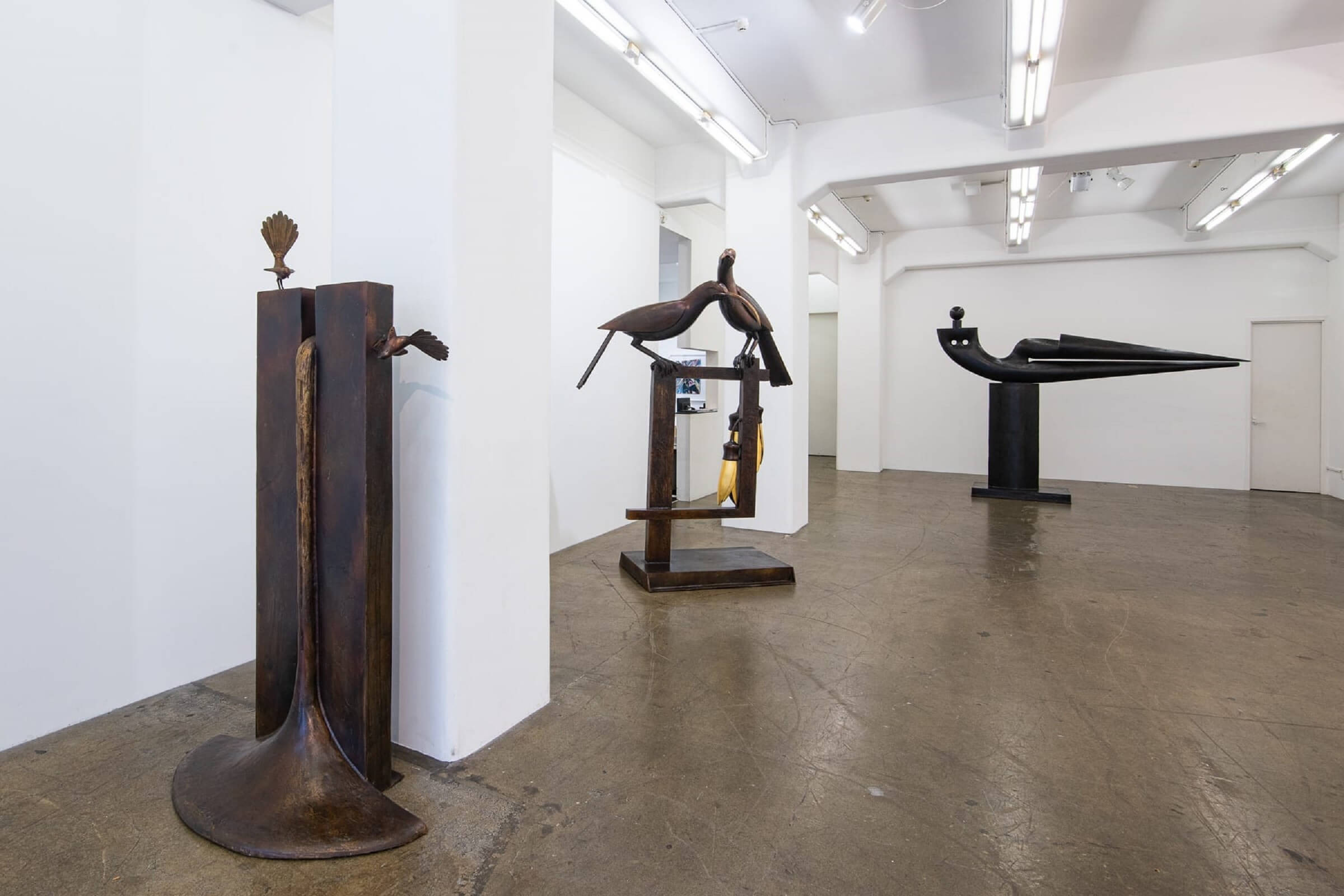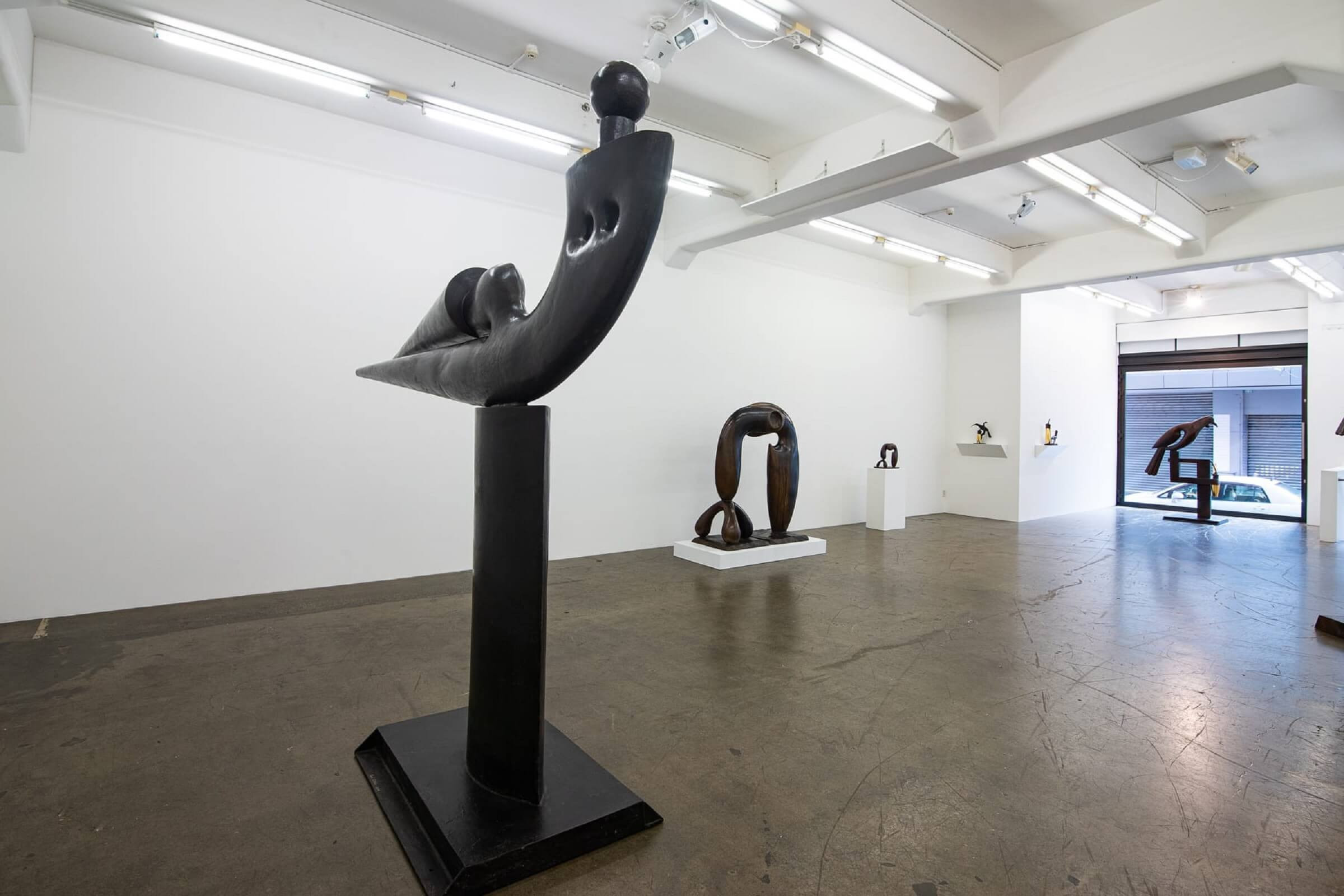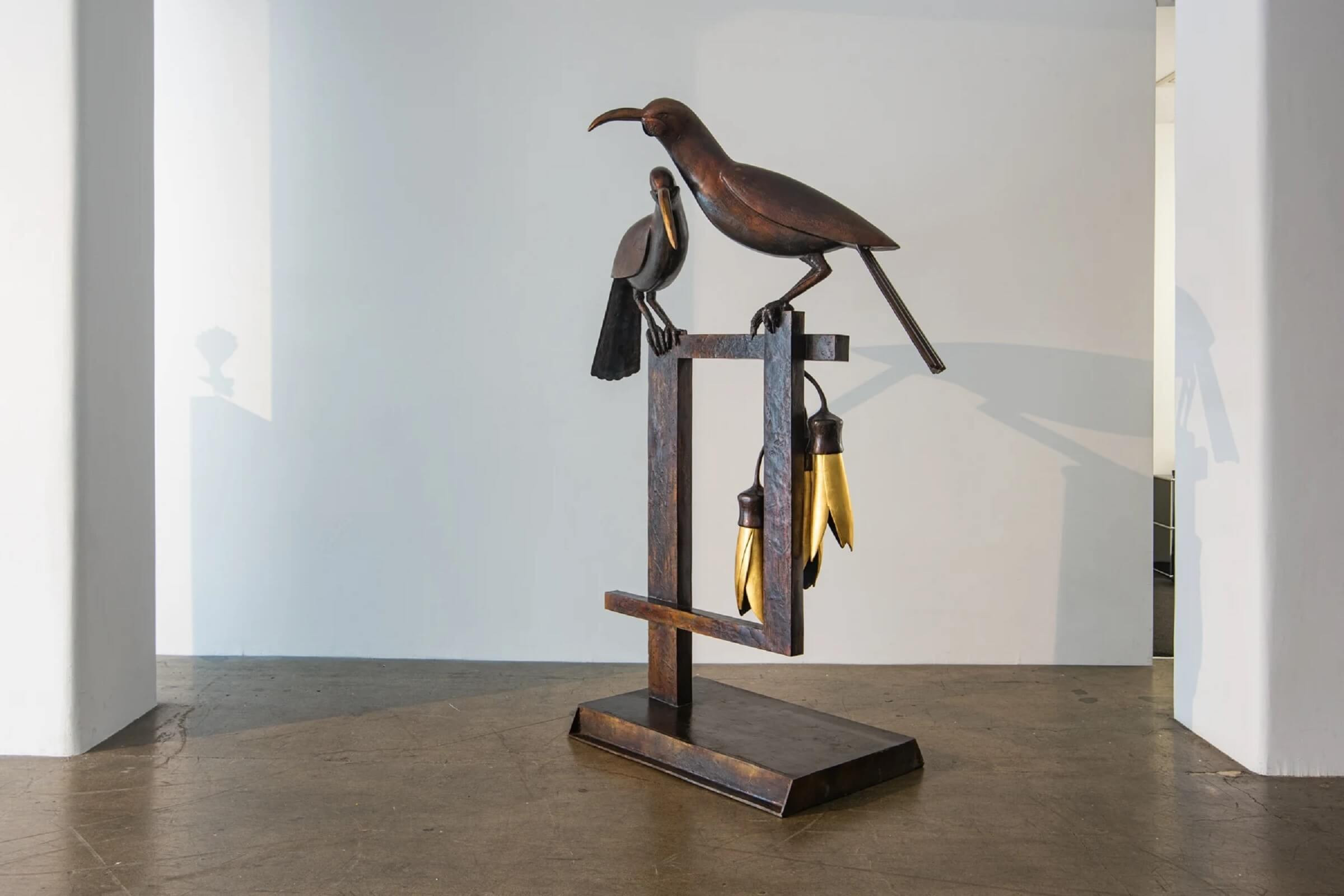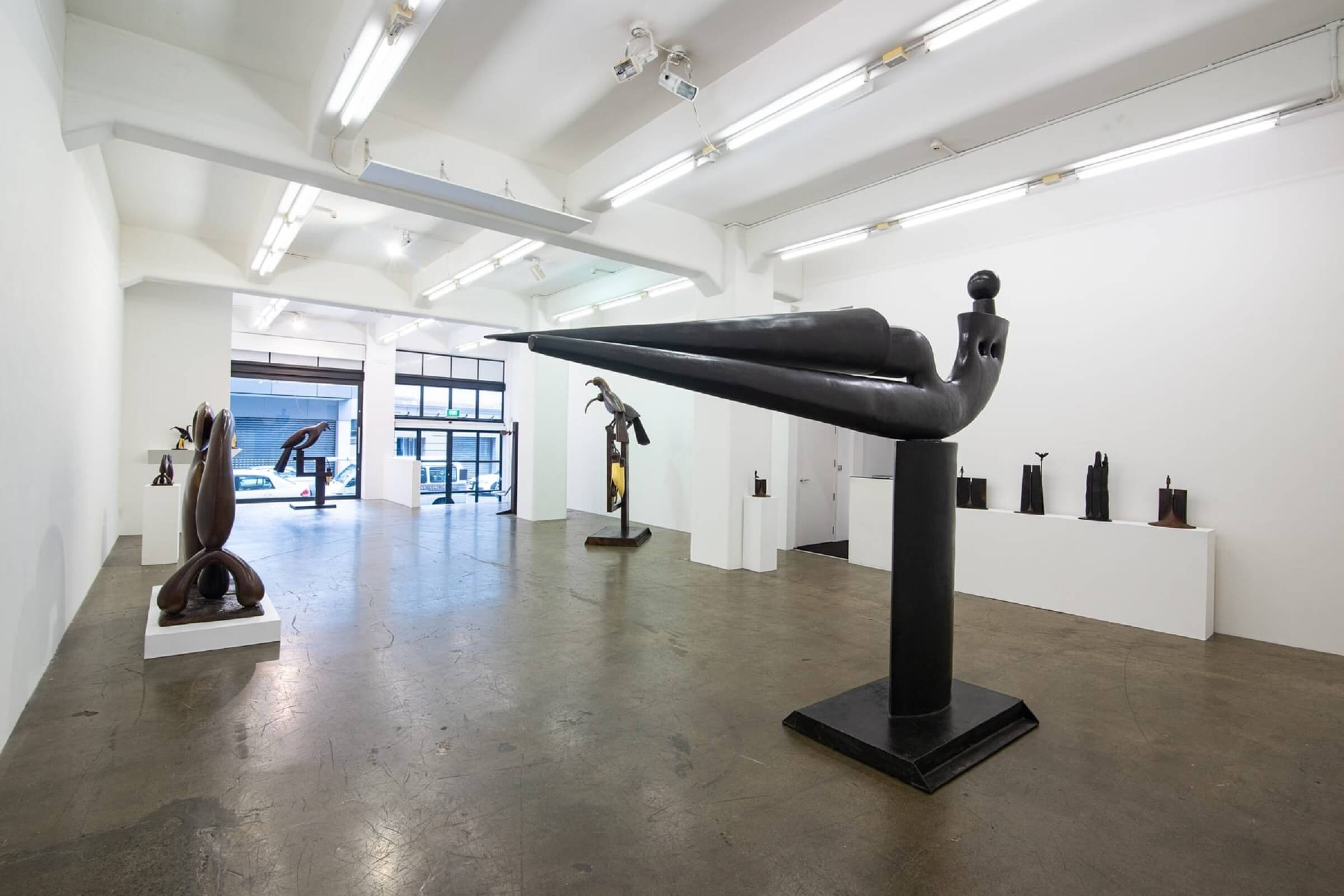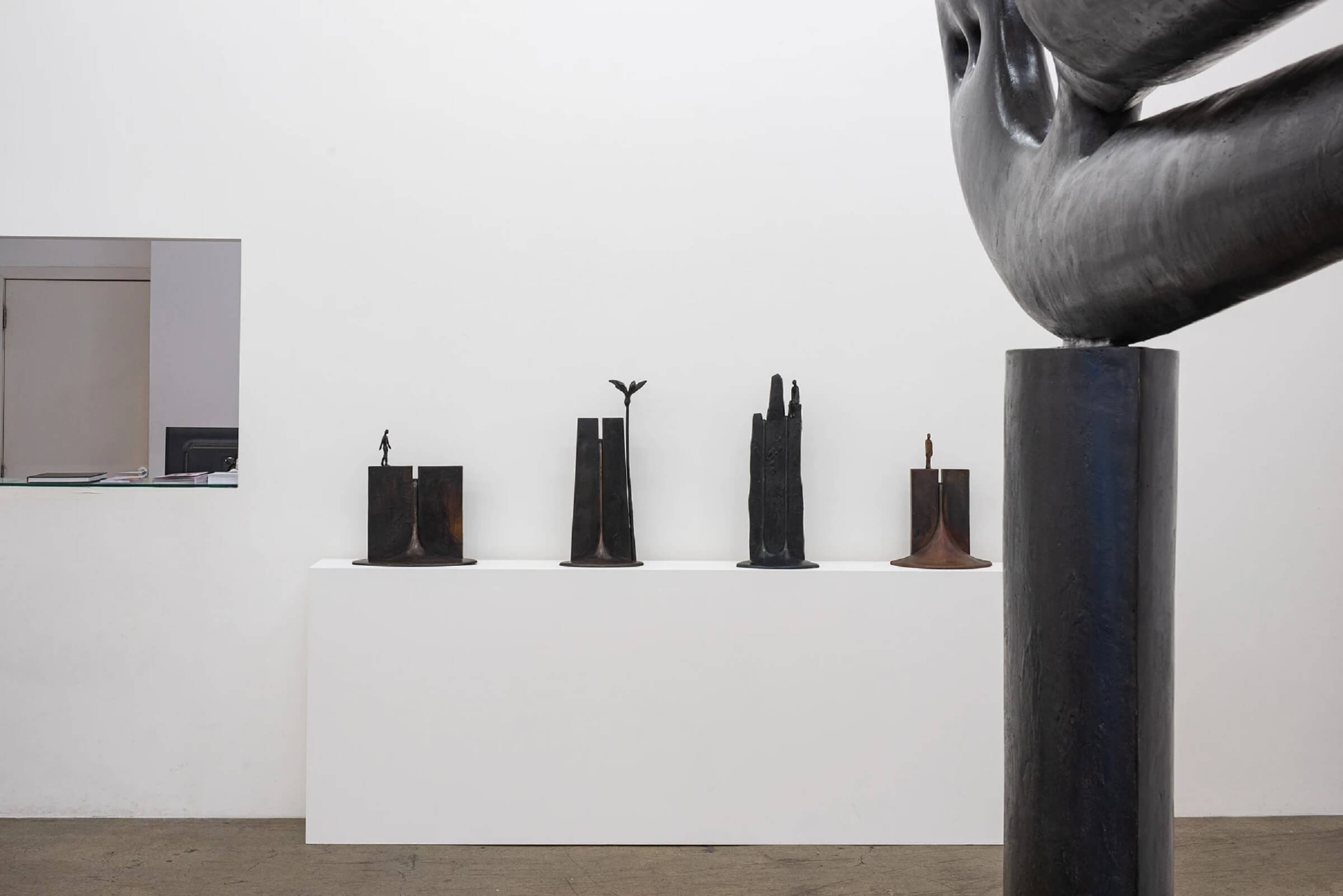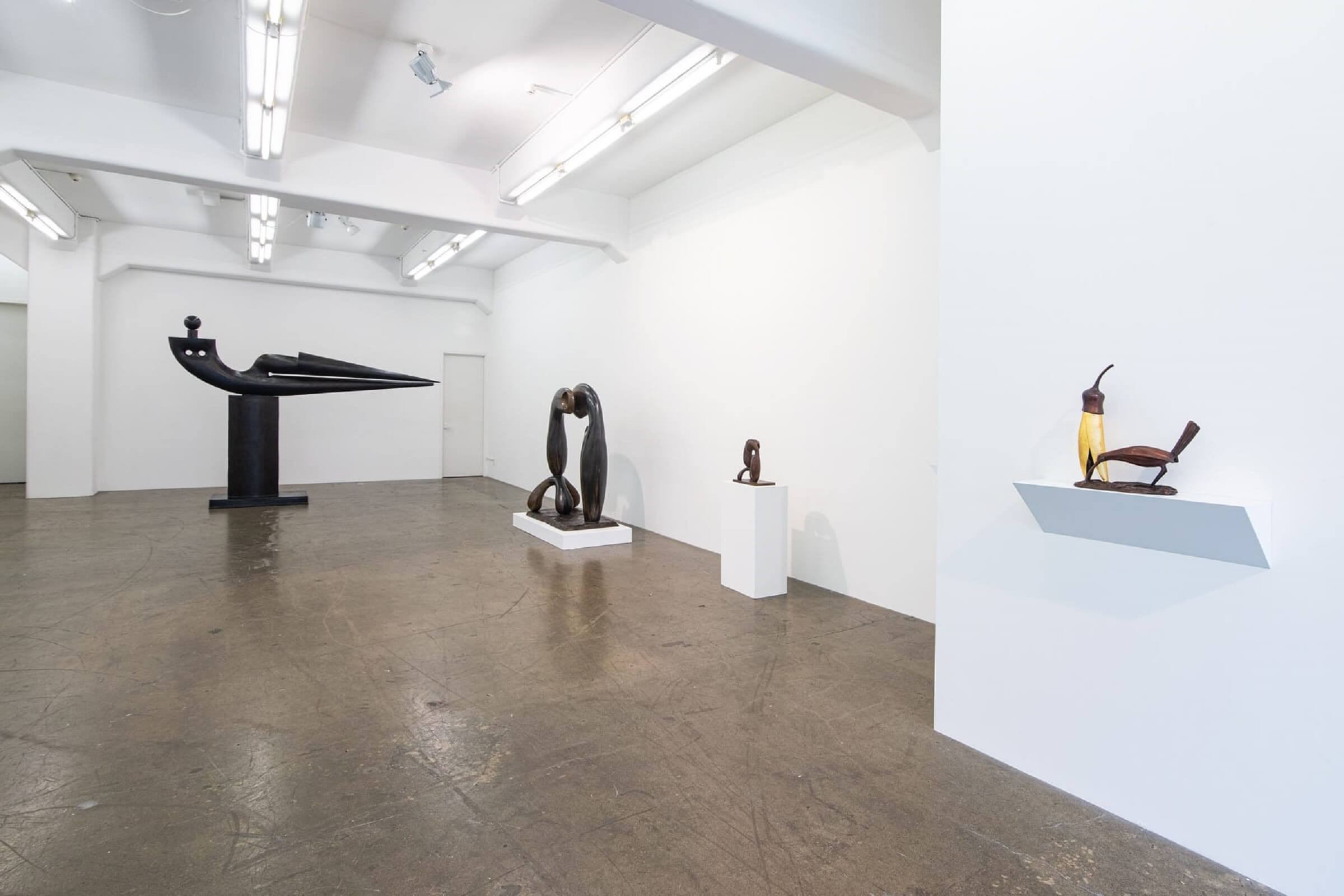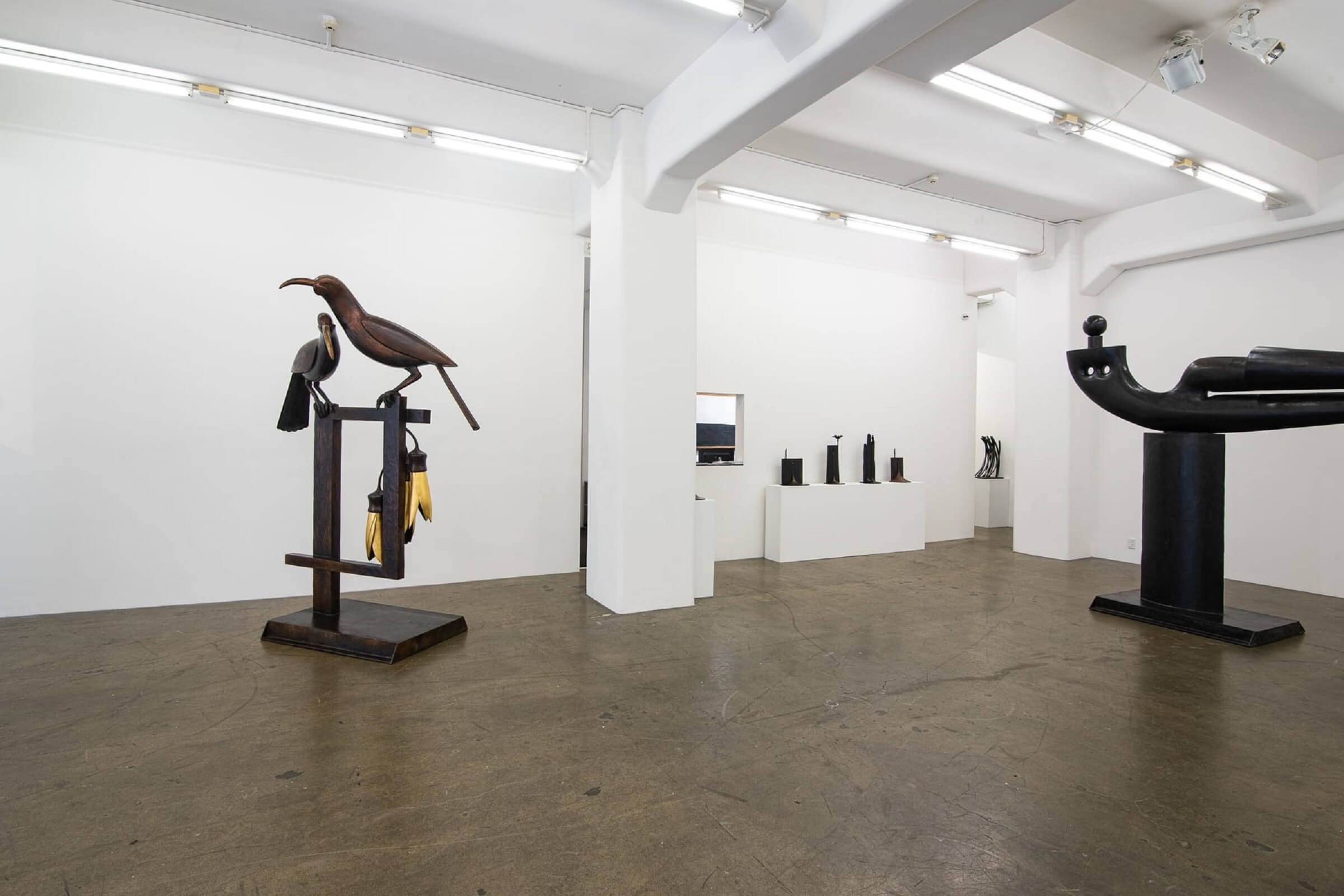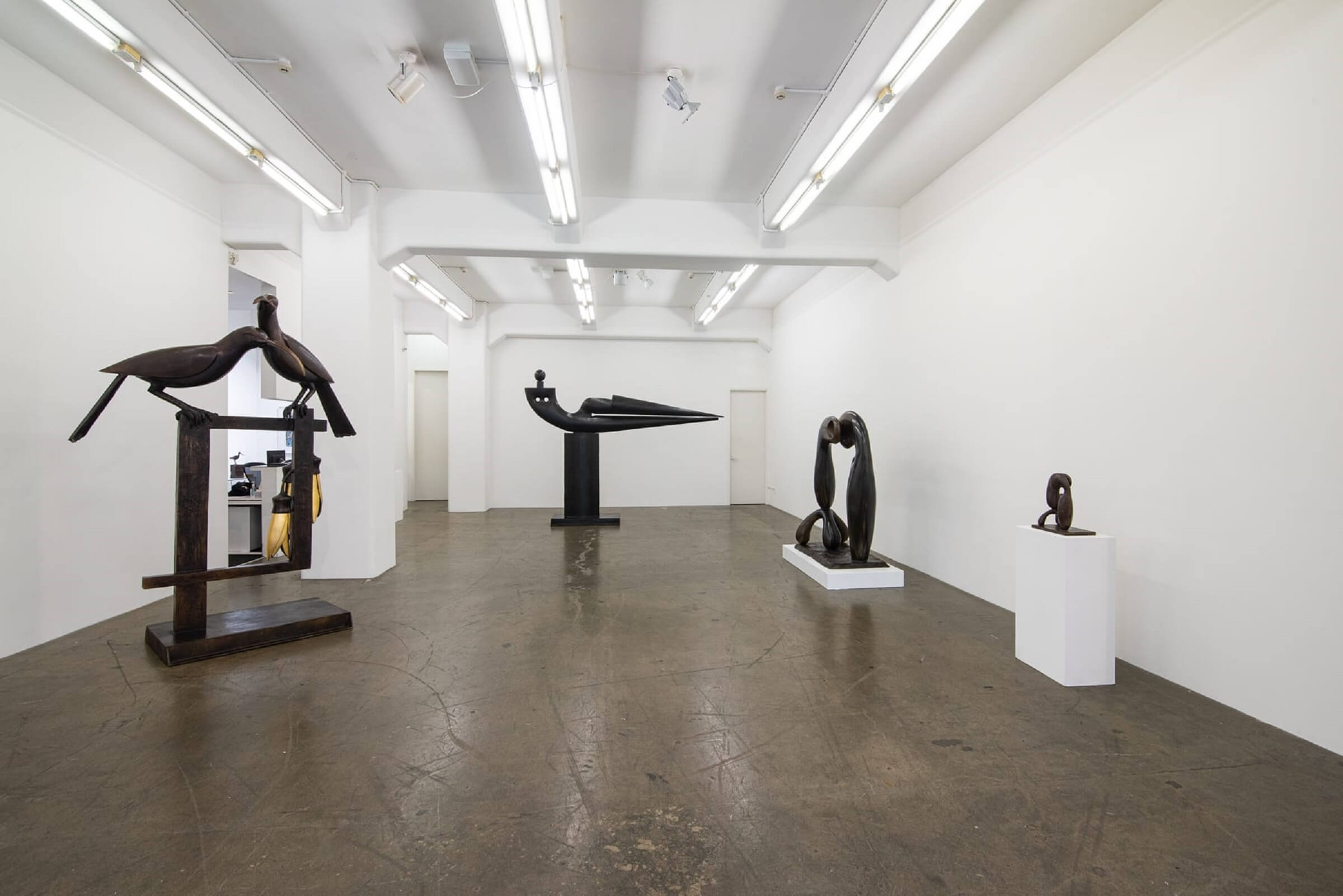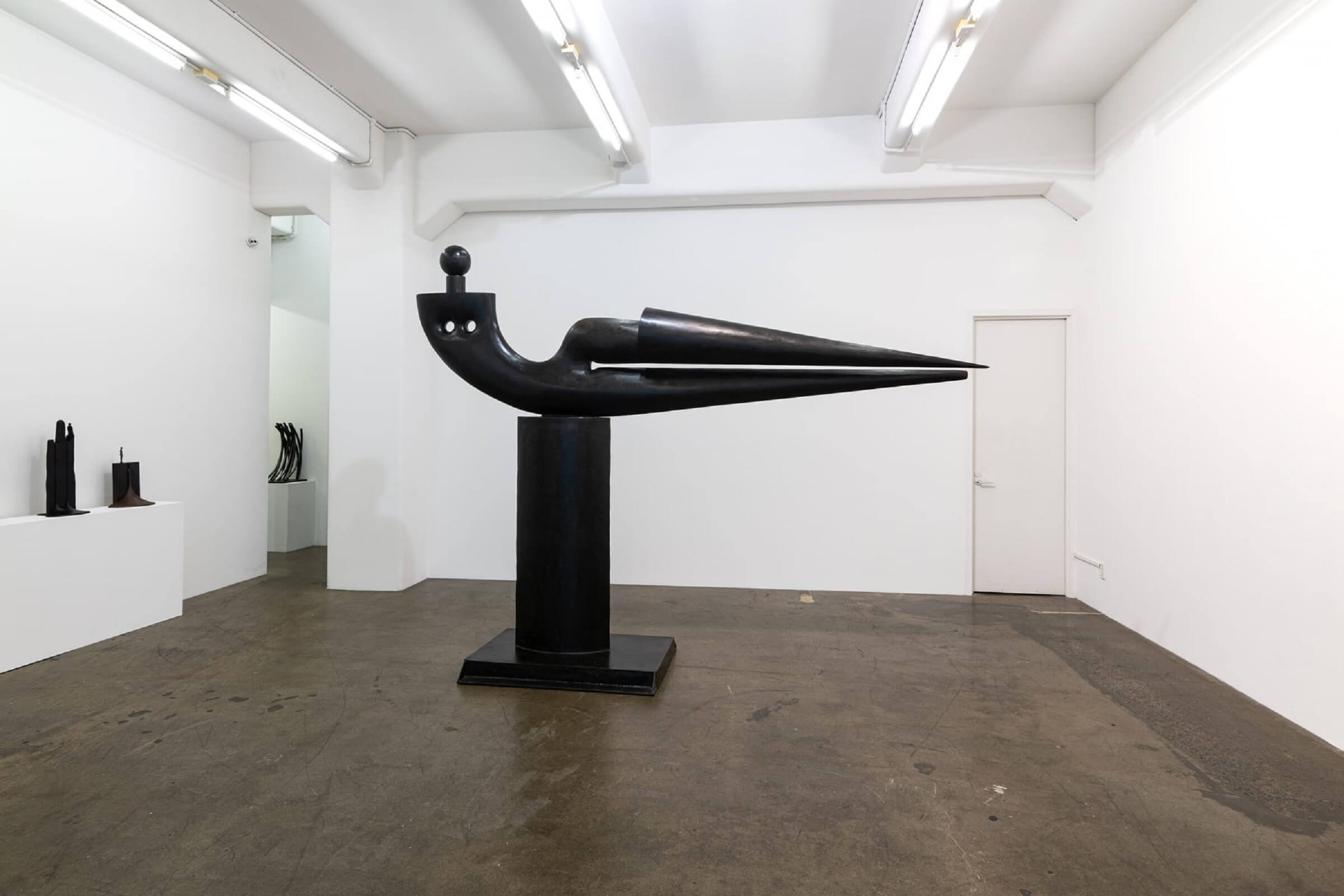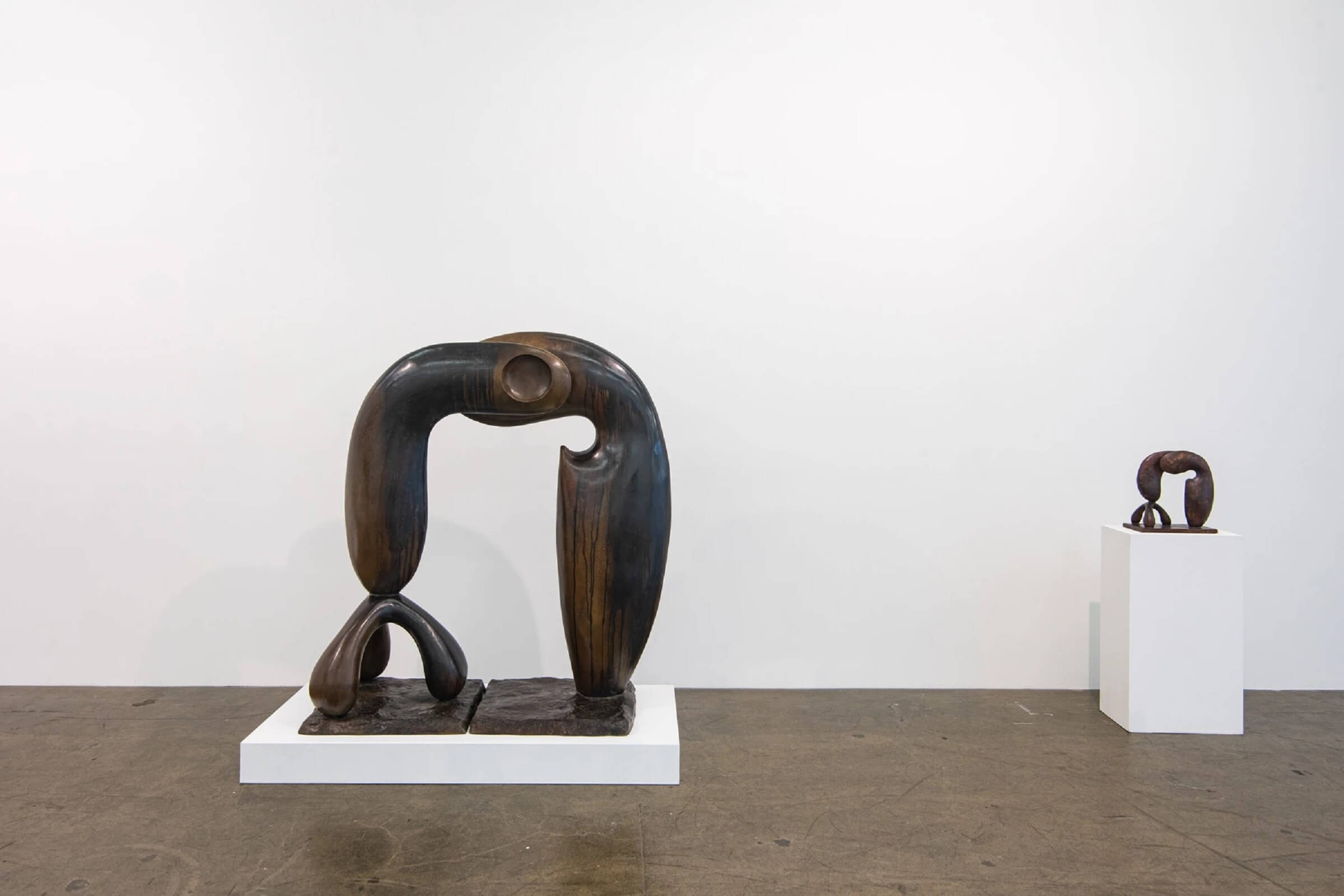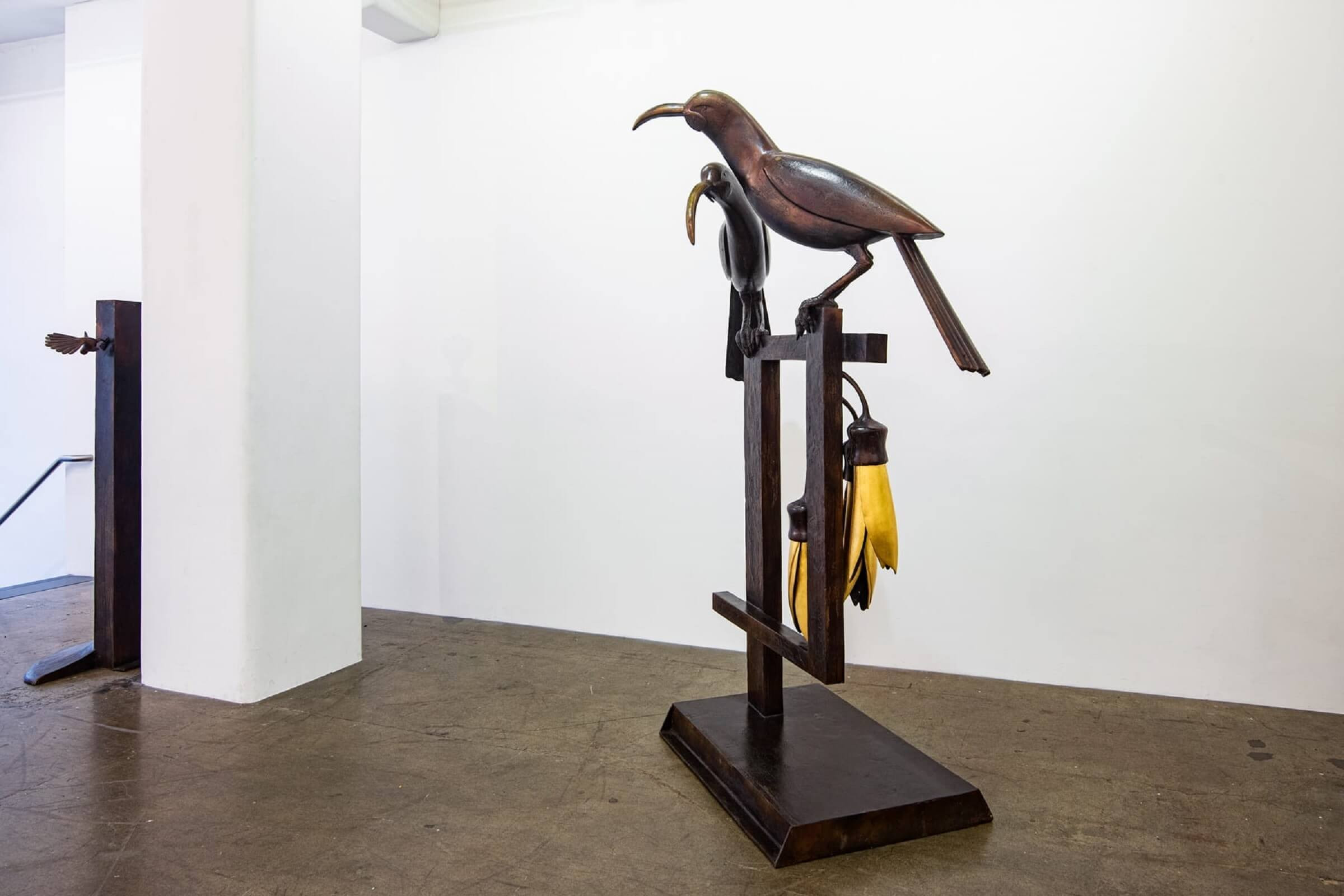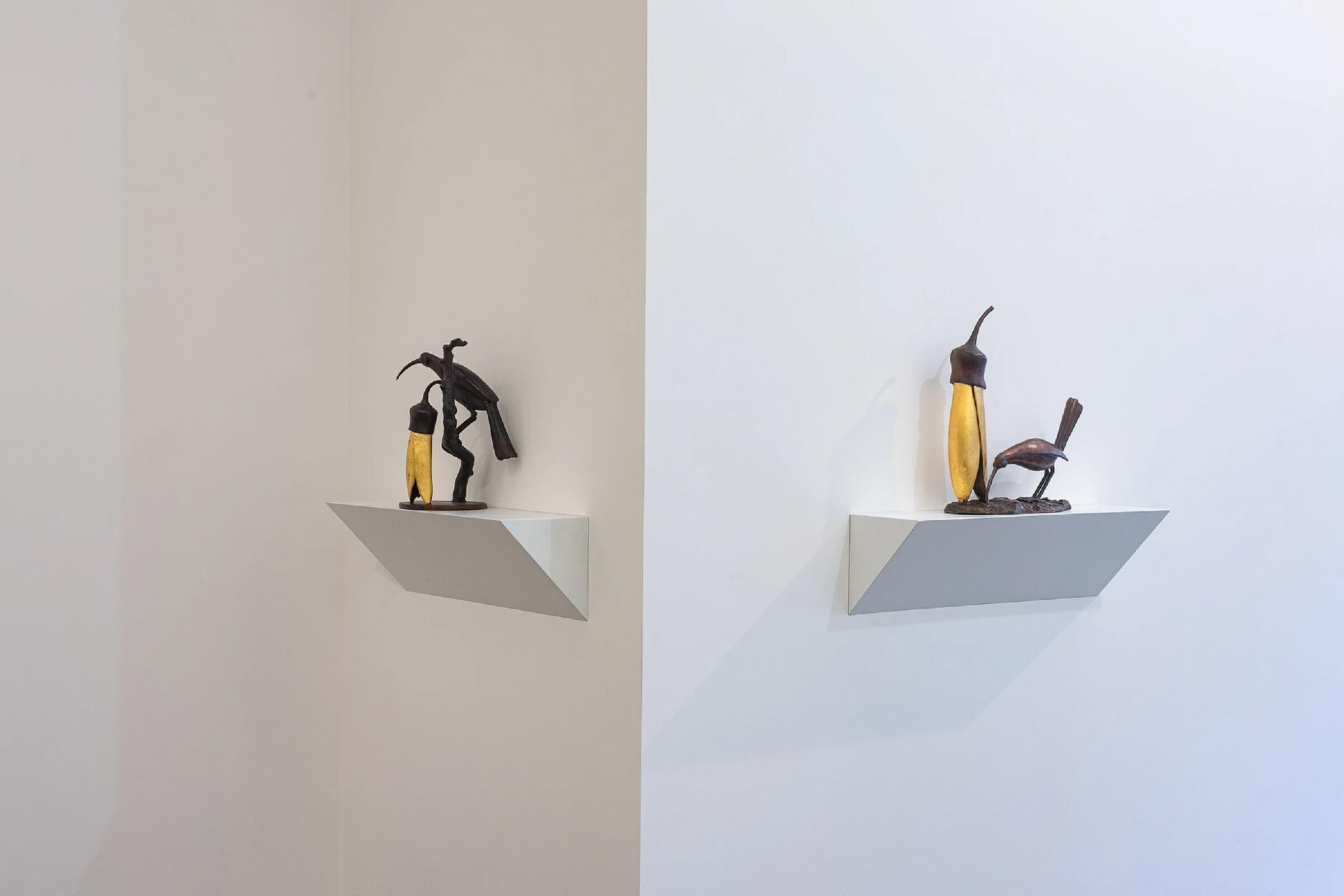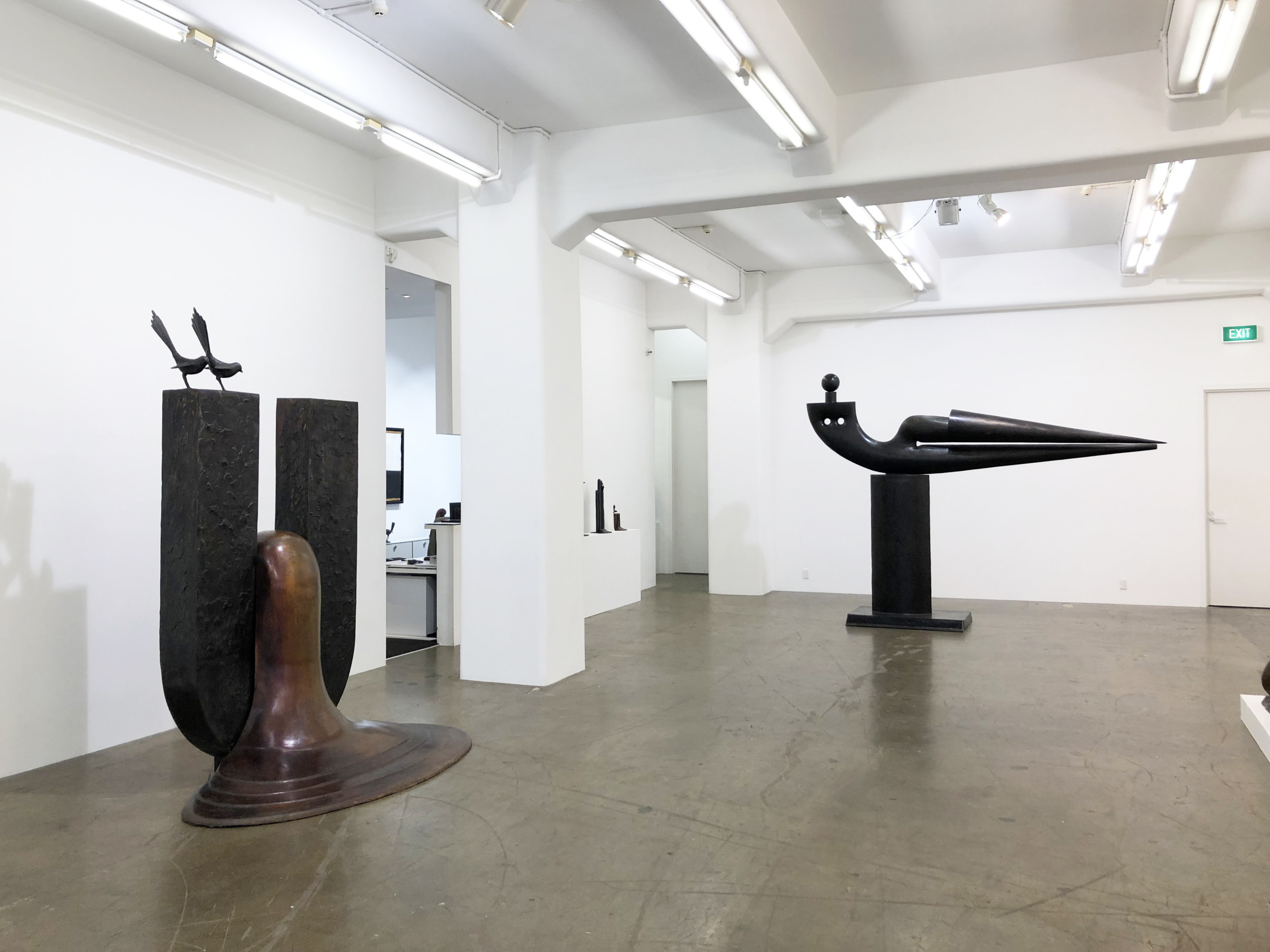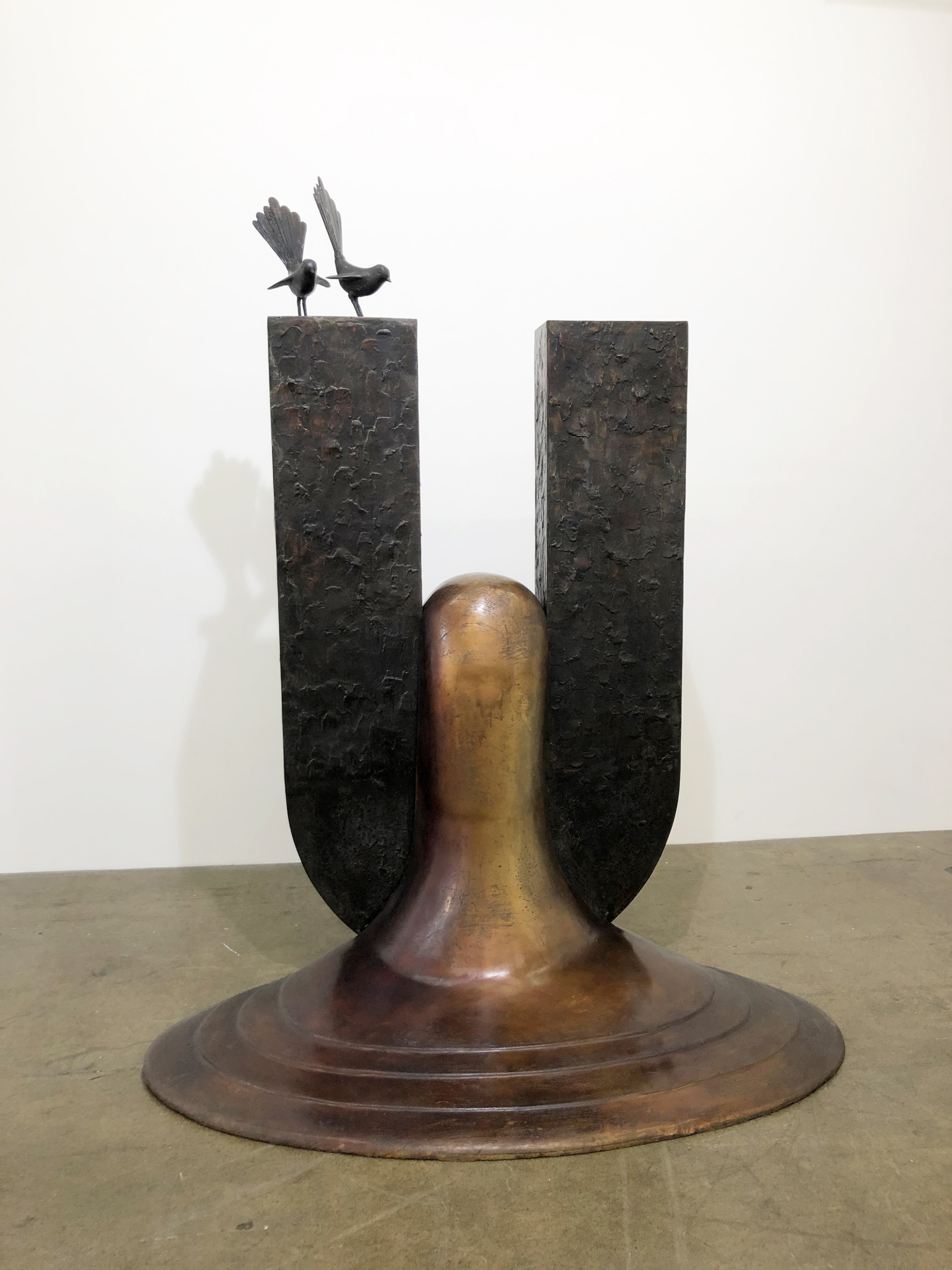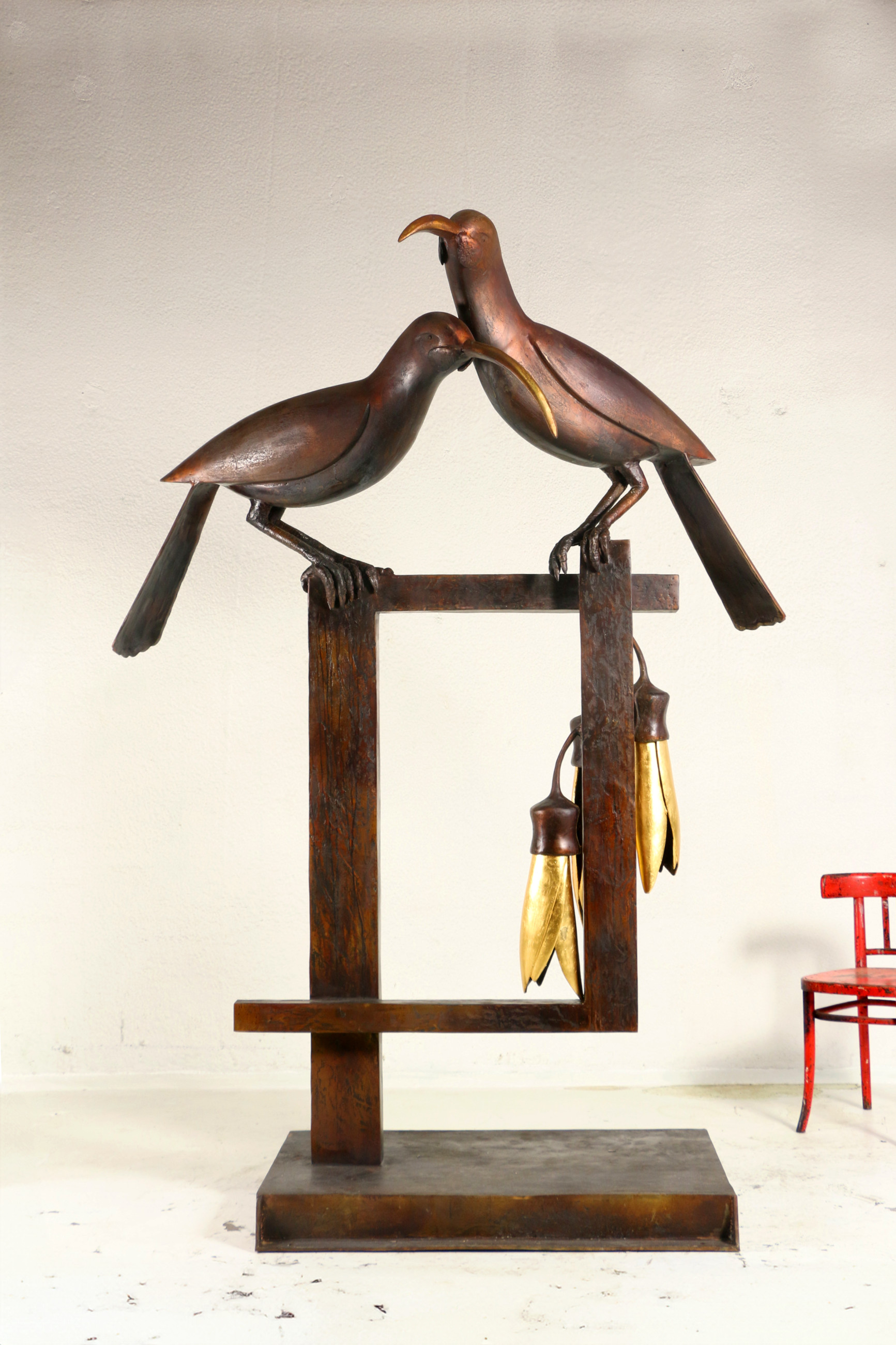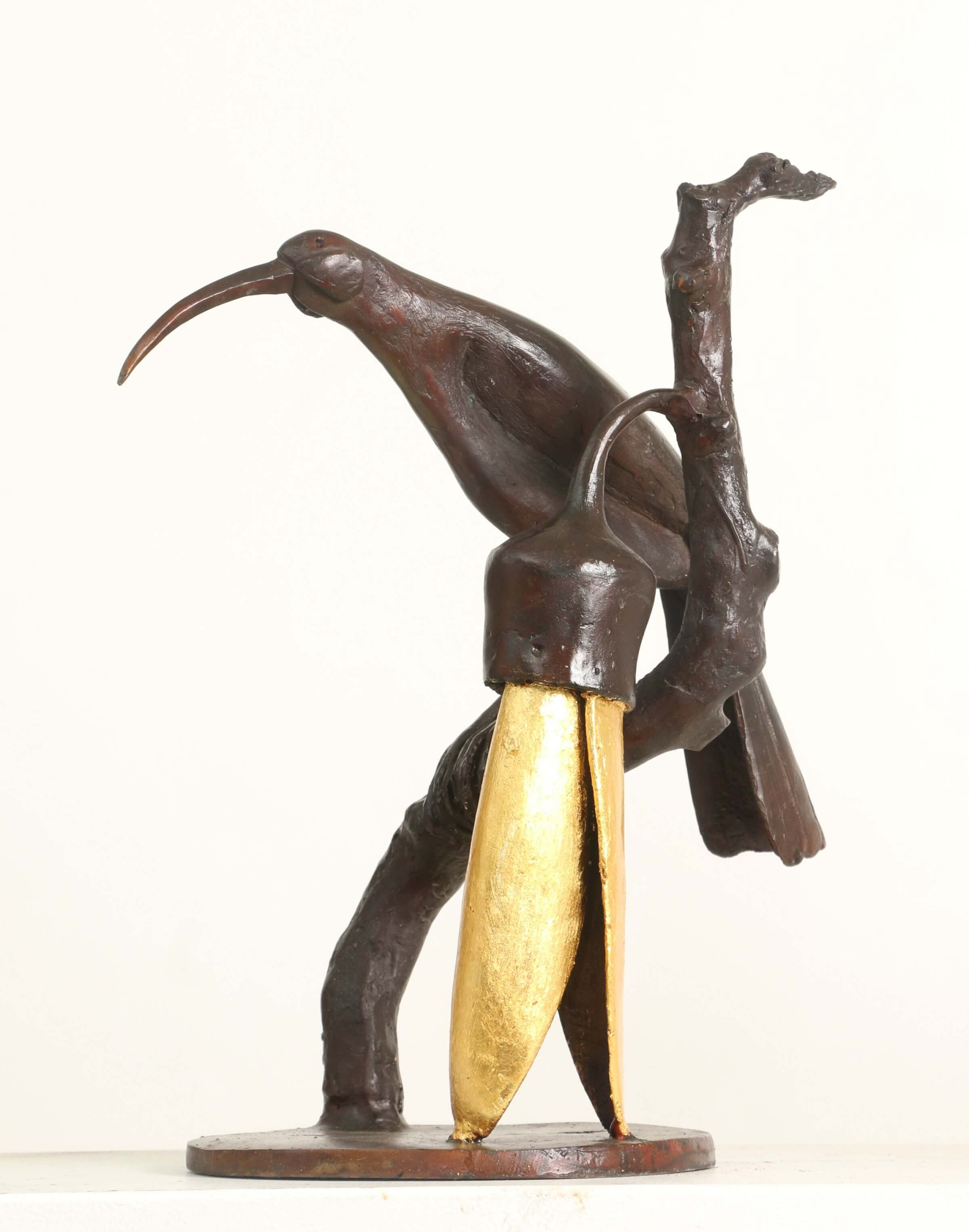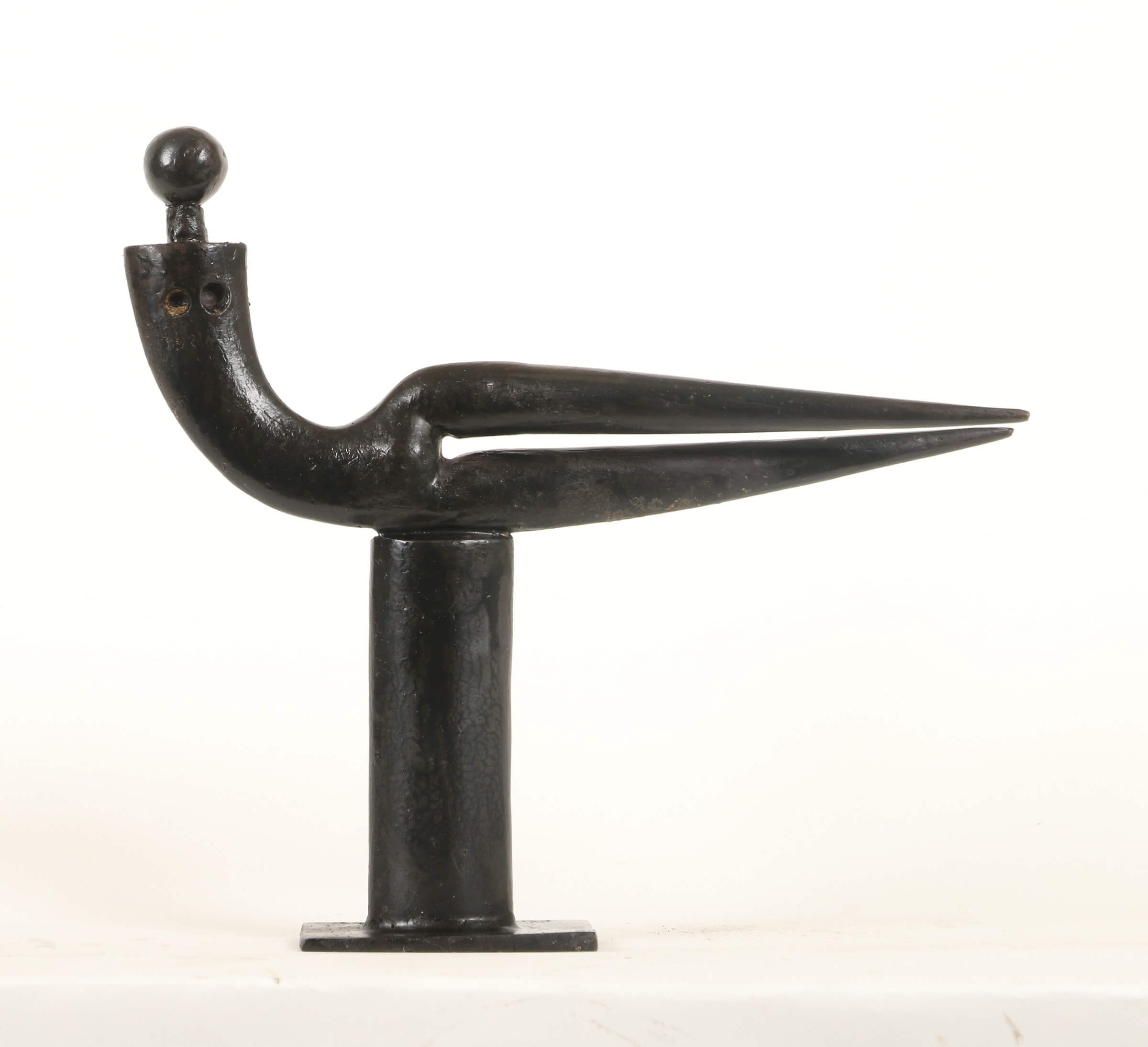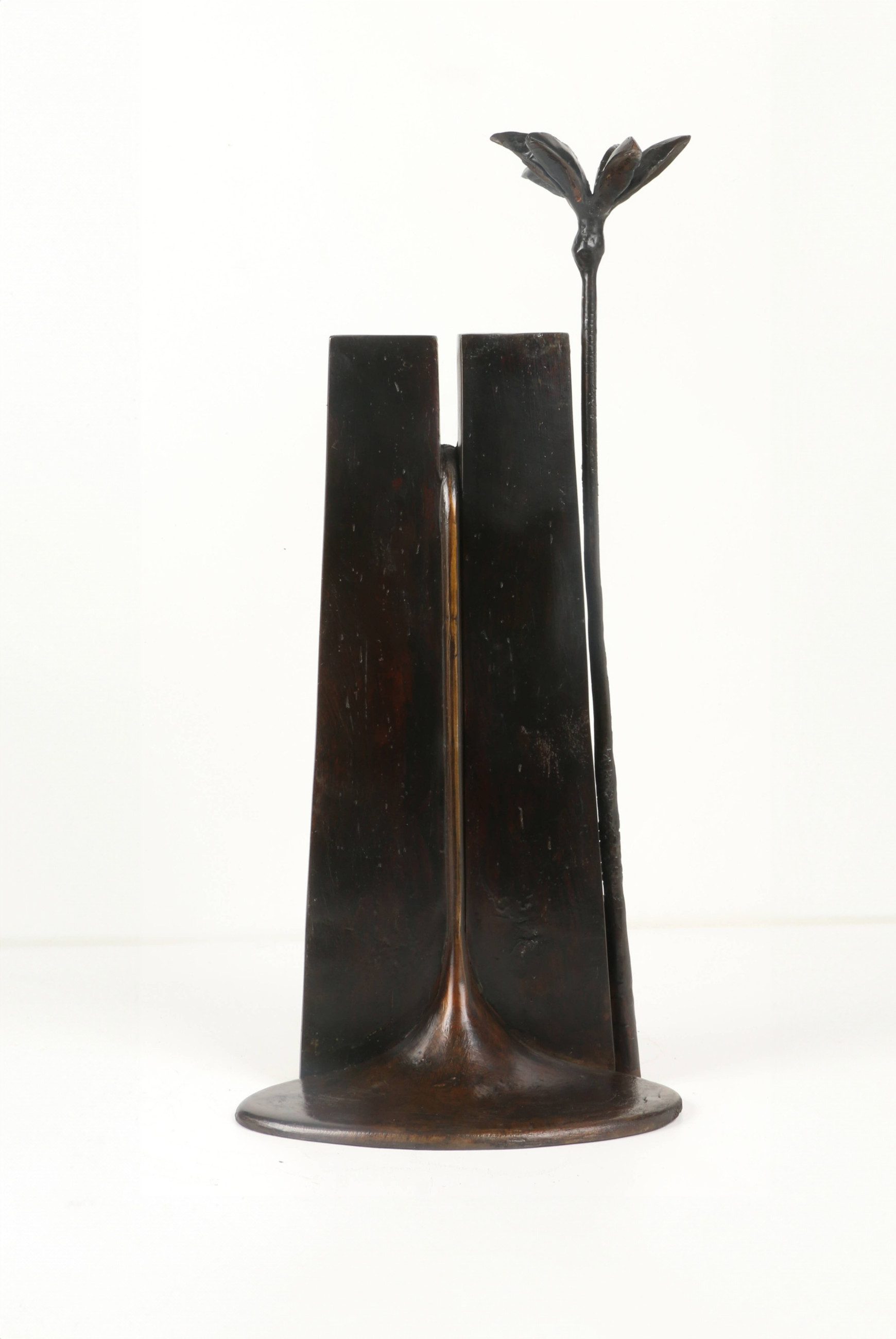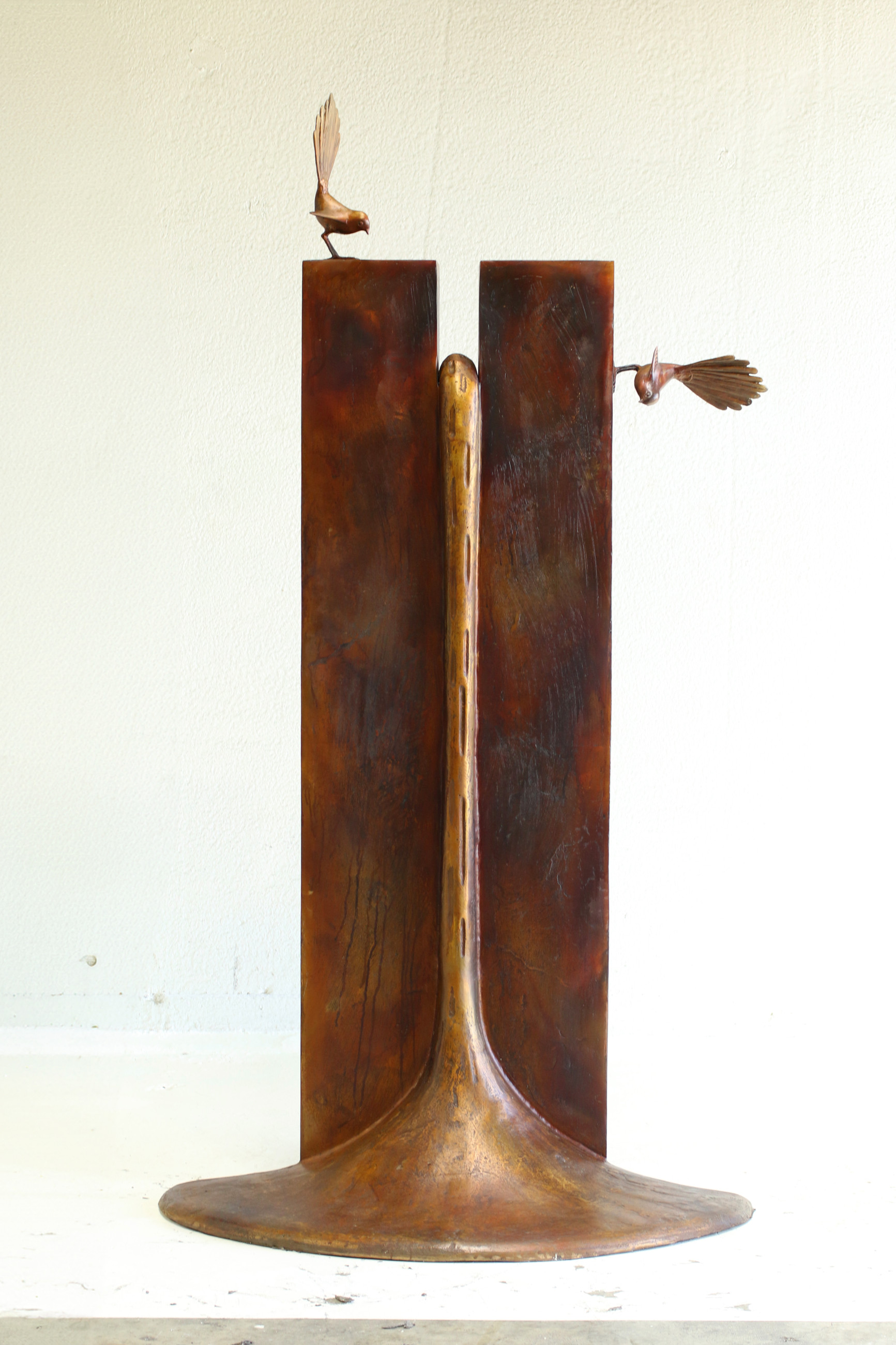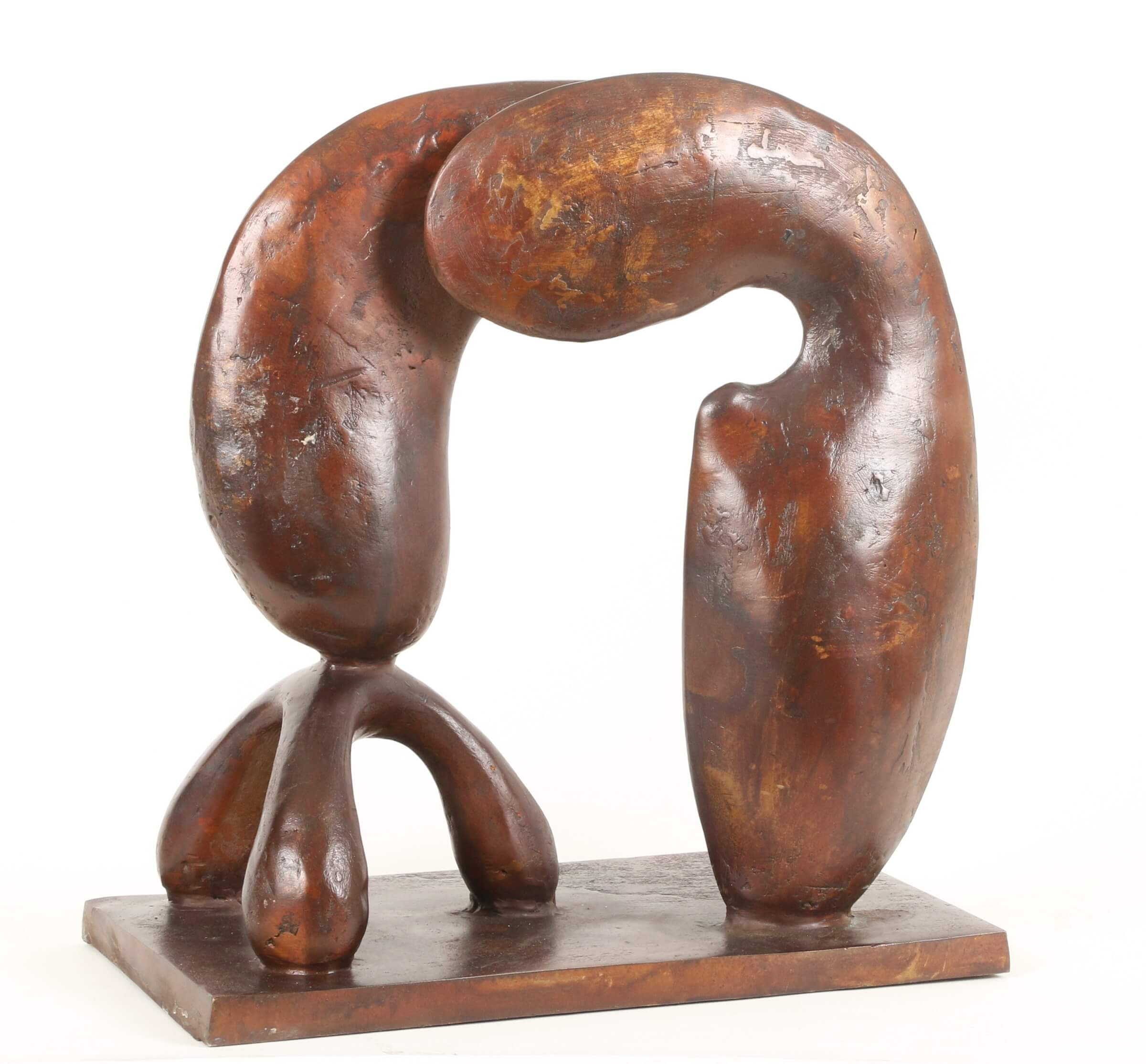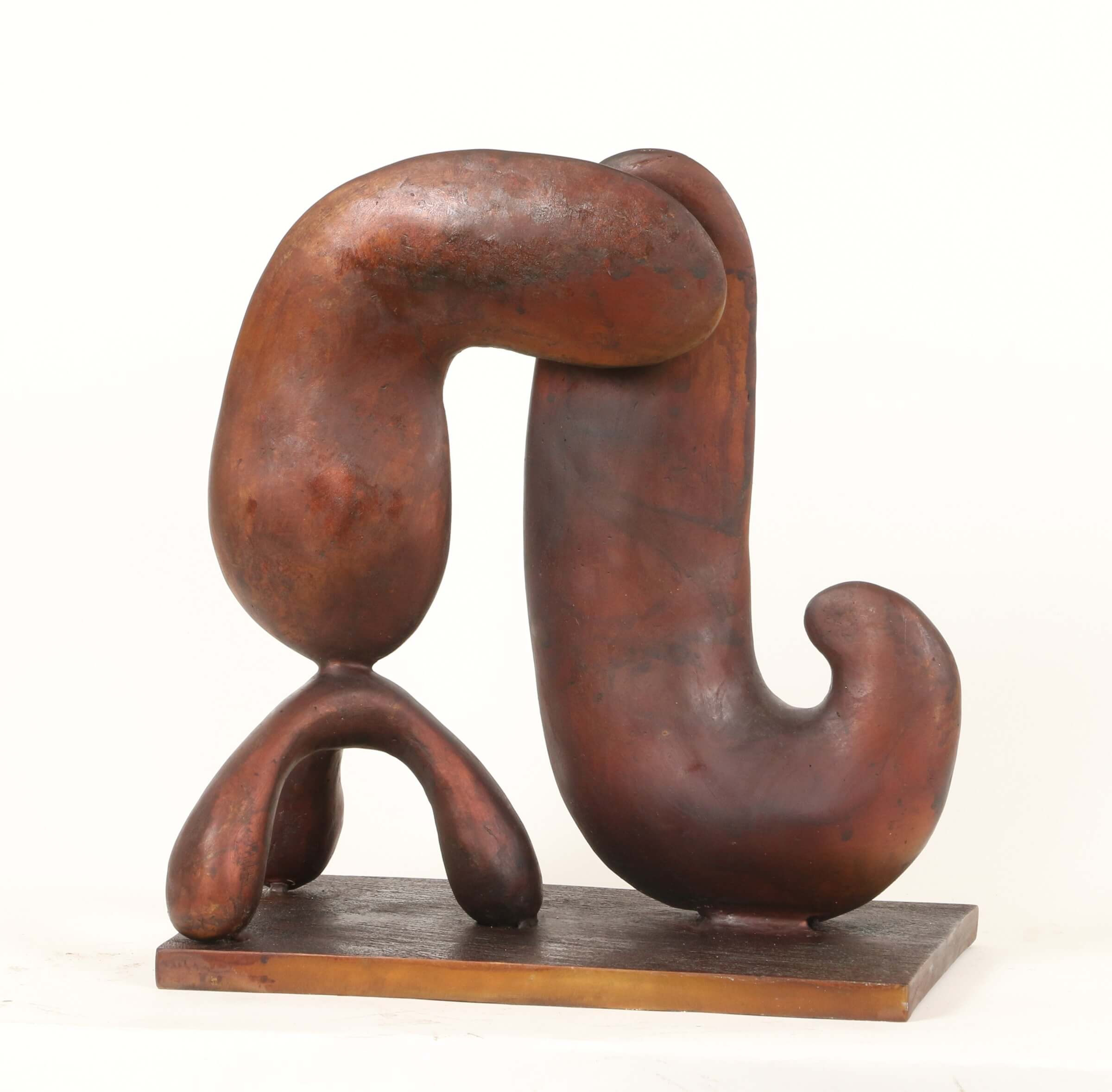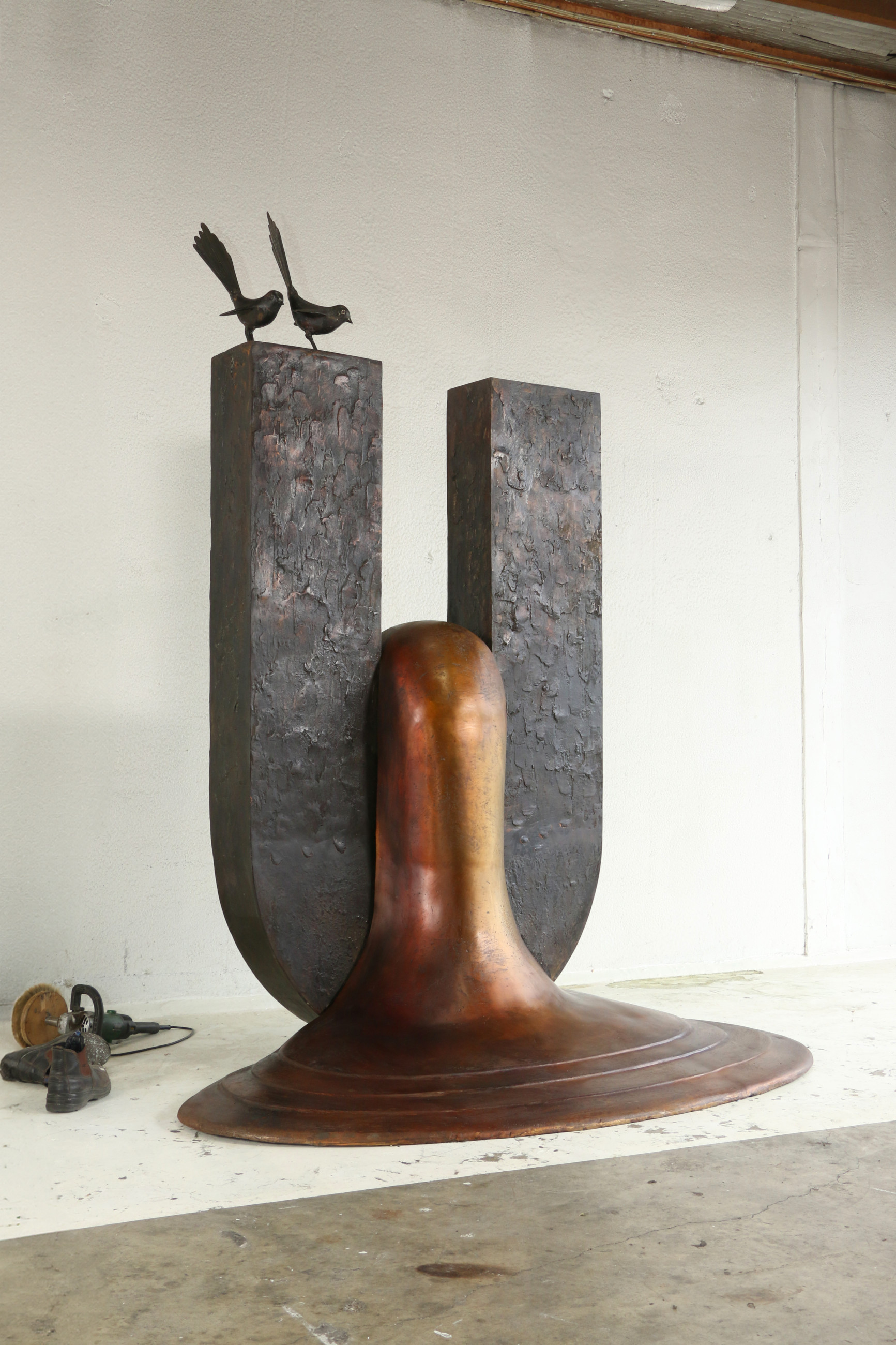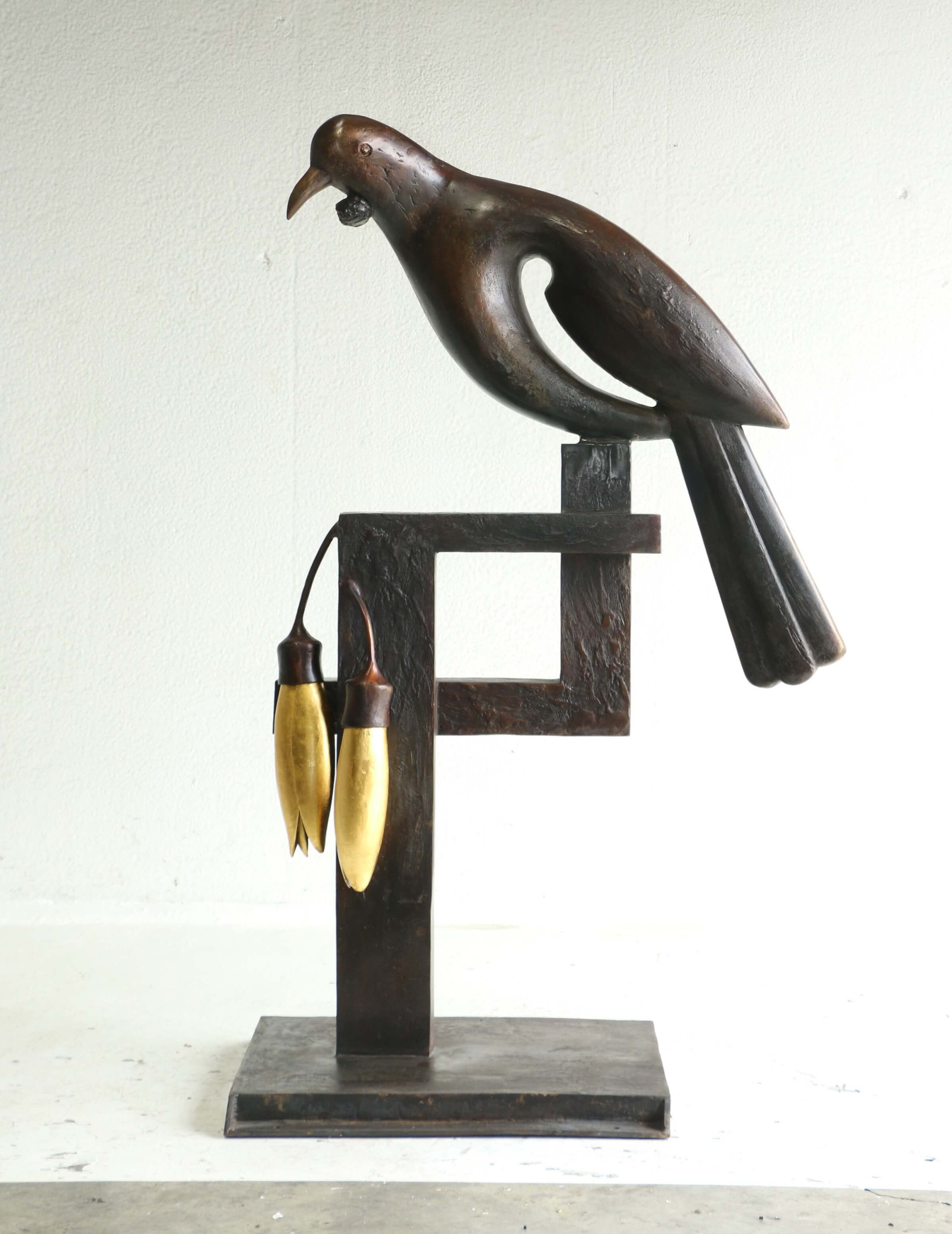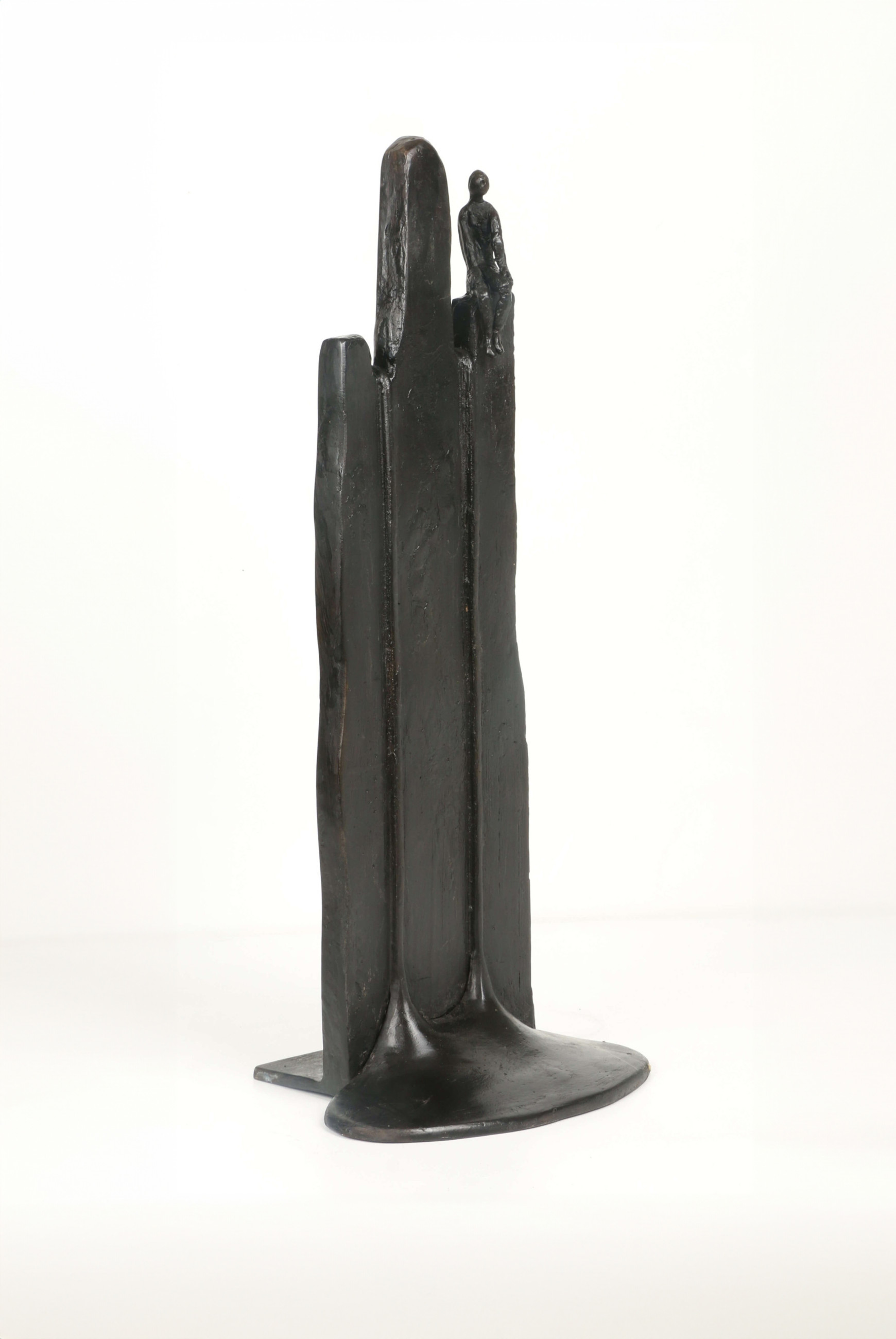April 8 - May 9, 2020 Four Sculptures
April 8 - May 9, 2020 Four SculpturesSolo, Gow Langsford Gallery, Auckland
Text
Four monumental sculptures act as guides through Paul Dibble’s upcoming exhibition, ushering us through over 35 years of the sculptor’s oeuvre. During this time the artist has taken his practice in four distinct directions, but crucially, these are concurrent. Rather than leave behind a thread having exhausted its potential, Dibble returns to bodies of work and their distinctive techniques and influences, finding them to be sites for infinite development and exploration. Each of the exhibition’s quartet of large-scale bronzes, made in the artist’s Palmerston North foundry, represents one of these movements to survey Dibble’s command of the metal and its innate versatility as an artistic medium.
When Dibble was at Elam School of Fine Arts in the 1960s, lessons in sculpture leaned towards the Modernist tradition in Western art. The Embrace has its earliest origins in this period, when Dibble began exploring the soft voluminous curves familiar to the work of British Modernist sculptors Barbara Hepworth and Henry Moore. Two swollen organic forms bend at right angles towards each other, arrested mid-reach, destined never to touch.
Dibble's Geometric series instead use the precision of mathematical shapes, abstracting the human body: a head becoming a sphere, a limb a cone. Of this body of work, Long Horizon has been a pivotal work for the artist, having been returned to regularly since the 1990s. Long Horizon shows a female figure reclining, her conical legs stretching out across the sand as she sunbathes. The reaching curve of her body echoes the expanse of the land, sea, and sky behind, and the negative space between her legs allowing for a glimpse of the horizon.
Both Construction with Two Huia and The Baptism of the Land ground Dibble’s practice in a distinctly New Zealand setting, and demonstrate the artist’s ongoing fascination with New Zealand’s native birds. Not far from the Dibble Foundry in Palmerston North is the location of the last sighting of the now extinct huia, the female and male of the species which Dibble imagines in bronze, chattering above a right-angled industrial structure. The sculpture continues Dibble’s treatise on the impact of environmental neglect, while the gold of the kōwhai flowers acts as a last tribute to the New Zealand ecosystem.
The Baptism of the Land sees the playful pīwakawaka (fantail) cheerfully flitting about a waterfall, a common sight for travelers through New Zealand’s many native bush walks. But for those familiar with New Zealand art history, cross-disciplinary homage to the artistic landscape tradition is paid: waterfalls feature prominently in our painting history, from Petrus van der Velden to the great Colin McCahon.
A chorus of maquettes and studies flank the four sculptures. While scaled down, these are not simply smaller versions of the same. Each work explores proportions and teases out relationships between shape, line, and mass. Here, Dibble demonstrates his intuitive understanding of his chosen medium, achieving for each an essential balance of formal elements. While large and small iterations of the four series magnify their stylistic differences, each is distinctly ‘Dibble’.
